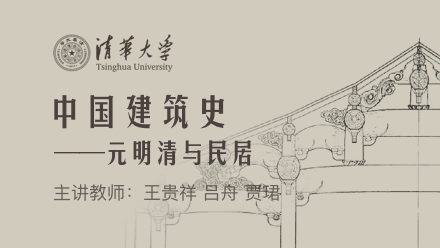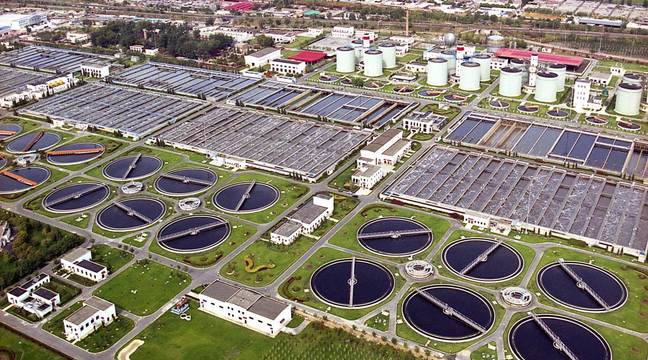
当前课程知识点:History of Chinese Architecture Part II > 12 Urban and rural life and architectural types > Section 2 > Commercial architecture and econimic life
返回《History of Chinese Architecture Part II》慕课在线视频课程列表
返回《History of Chinese Architecture Part II》慕课在线视频列表
关于商业建筑 我们也先给一个简单的书单
利用这个书单可以拓展阅读
当然商业建筑有南北方之分 而也有不同类型之分
我们大概分成两个部分来说
一个说说南方和北方的商业店面
另外一个说说比较独特的
一个商业结构类型叫会馆建筑
那北方的店面相对来说建筑语言比较复杂
梁思成先生曾经归纳过大概店面三个大要件
一类叫拍子房 就是照片内所示的这种类型
平顶房 平顶房上面可以加栏杆
但拍子房之上还可以加楼 这是拍子房
再有一类牌楼式 牌楼式比较隆重
装饰最为铺张者 是在店面前面立一个大牌楼
就如这张照片这一角所示
当然还有幌子
幌子 各个铺面有不同的自己特点的幌子 挂在外面
所有这些要件比较集中地反映在一张画里面
有趣的画里面 这张画是《圆明园四十景图》
是画的舍卫城 舍卫城外的一条买卖街
这条买卖街中间做买卖的人
包括买东西的人都以内监充之 就是内廷的太监
他们从城外的四市里面买来该买的东西
到舍卫城里面去卖
皇帝也会逛舍卫城买卖街
皇帝说当时逛的时候与最下级的臣民无异
也是像买东西的人 而不是像视察的人
到那儿讨价还价 俄而喧哗口角
俄而甚至挥拳奋斗 和别人打一打
这是一段有趣的小历史故事
反映的是当时北方的买卖场景
如果我们仔细端详这幅画就可以找到不同的幌子
可以找到拍子房 也可以找到牌楼店面
各式店面 不同规格的各式店面
那我们还有些老照片可以反映前门的市肆
以及其他各省的北方城市的这个市肆
前门大街很热闹的场所 除了店面之外
还搭了很多棚架 做临时的买卖之所
当然这种景象除了前门以外
我们还可以看到山东的 山东的单县
山东的临沂等地的市肆情况
南方则略有不同
南方街巷 商业街巷成熟得比较早
固化的密度也大 建筑密度也大 幌子密度也很大
给的空间气氛 因为当时的建筑语言不同而有所不同
会馆在一些城市里面
各个祖籍相同的人集资所建造的交流场所
它可以做饭馆用 可以做旅馆用
同时里面经常是名商巨贾云集 讨论买卖
也是物流的一个重要环节
在会馆建筑里 全国重要的保护单位
所谓国保单位 国家级保护单位
就是我们所知的这个北京的安徽会馆
安徽会馆位置离琉璃厂不远 后孙公园胡同
它的平面图是这个样子 由三路建筑组成
安徽会馆 鸟瞰大概有这么样一个环境
后面还附带着花园
它是当时淮军将领和皖籍的官员来北京的聚会场所
有些淮籍官员 皖籍官员到北京述职呢
就临时住在这儿当宾馆用
简称就是宦游 宴聚 栖止之地 所以联洽乡谊也
当时李鸿章和李鸿章的兄弟一起动议
来做的这个安徽会馆
它这本身是一组商业建筑
我们看这个平面图里面所反映的这三路
中路后半部有一个戏园
这我们在下一节会想到
它的东西除了一些重要的门厅
和接待的空间之外 一些祭祀之外
其他的经常会用作饭馆 大家在里面吃饭 聚会
西路这些房子被用作旅馆
除了安徽会馆在全国各地还有一些很多会馆
山陕会馆 福建会馆 包括晋商在各地所建的会馆
而这些会馆除了商业功能以外也有自己的祠堂 神坛
当然商业功能是必不可少的
作为一种重要的商业建筑存在
这简单地梳理一下清代的商业建筑
那商业建筑我们的要点
其实倒在于南北方商业建筑基本建筑形式
对于背后的商业发展
那各地有各地的特点 这里我不做过多的介绍
-Section 1
--Xanadu and Dadu of the Yuan Dynasty
--Religious Buildings of the Yuan Dynasty
--Buildings of Science and Technology in the Yuan Dynasty
-Section 2
--Reconstruction of the Ming System and an Overview of Its Cities and Architecture
--Cities and Towns Outside the Capitals in the Ming Dynasty
-Homework
-Section 1
--Forbidden City of Beijing in Ming Dynasty
--Imperial Altars and Temples of Beijing in Ming Dynasty
--Temple of Confucius in Qufu, Ming Dynasty
--Ming Xiaoling Tomb in Nanjing and the Ming Tombs in Changping
-Section 2
--The Buddhist Architecture of Ming Dynasty
--Taoist architecture of the Ming Dynasty
--Architecture of the Educational Institution of Ming Dynasty
-Homework
-Section 1
--An introduction to architecture of the Qing Dynasty1
--An introduction to architecture of the Qing Dynasty 2
-Section 2
-Section 3
-Homework
-Section 1
--Cities and urban facilities in the Qing Dynasty
--Government office mansions and architectural rules1
--Government office mansions and architectural rules 2
-Section 2
--Temples and altars, religious architecture and spiritual life
--Commercial architecture and econimic life
--Theaters and recreational life
-Homework
-Section 1
--Architecture: Europe and China & Imperial Specifications for State Buildings
-Section 2
--The architectural artisans 1
--The architectural artisans 2
--The architectural artisans 3
-Section 3
--Appreciation and Analysis of a Few Examples1
--Appreciation and Analysis of a Few Examples 2
--Appreciation and Analysis of a Few Examples 3
-Homework
-Section 1
--Introduction to the Chinese classical gardens
--The imperial gardens in Ming and Qing dynasties 1
--The imperial gardens in Ming and Qing dynasties 2
-Section 2
--Private gardens in Jiangnan (the regions south of Yangtze River)
--Private Gardens in Lingnan regions
--Private Gardens in North China
-Homework
-Section 1
--A brief history of the Chinese vernacular architecture
--The courtyard house of the northern China
--Tingjing style vernacular dwelling in the regions south of the Yangtze River
-Section 2
--Tingjing style folk dwellings of the southern China
--The Hakka earthen house in the southeastern China
--Cave dwellings in the Loess Plateau
--The architecture achievement of Chinese traditional vernacular dwellings
-Homework
-Section 1
--Residential buildings of the Manchu and Chaoxian (Korean) ethnic groups
--Architecture of the Uygur ethnics in Xinjiang
-Section 2
--Tibetan architecture in Tibet
--Multi-ethnic Architectures in the Southwest Regions
-Homework



